Comments / Questions (11)
![]() Claudine wrote:
Claudine wrote:
I have issues with the top right & left front with extra stitches and cannot do the assembly correctly. Reading the comments below I agree the increases should be decreases. I am about to frog both tops of the front pieces.
03.01.2025 - 18:32DROPS Design answered:
Dear Claudine, the pattern is correct; these increases are only for the neck which is raised kind of like a lapel, as seen in the picture. If you have a different thread or gauge than that of the pattern the resulting effect may be too loose and it will fall instead of staying straight. Happy knitting!
05.01.2025 - 19:33
![]() DROPS Design wrote:
DROPS Design wrote:
Molly, your are right that the shawl collar piece that goes around the neck will have a height measure of approx 5 inch. This drapes up along your neck, and you fold the upper edge only. Depending on which yarn you are using the collar might drape differently. In SilkeTweed which is very drapey and crisp this works beautifully. SilkeTweed used in this design holds it's shape and doesn't "fall" down.
17.04.2009 - 18:10
![]() Molly wrote:
Molly wrote:
Correction to my last comment: The gauge for this project is more like 6 sts per inch (which is what I'm getting) so that 32-34 stitch collar is over 5 inches in width (height).
17.04.2009 - 08:31
![]() Molly wrote:
Molly wrote:
If 9 stitches is 1 inch in Silke-Tweed (and that is what I'm getting) then the collar, which is 33 stitches, is over 3.5 inches before the 2 thread part. This does seem quite tall-- does it scrunch up behind under the more rigid 2 thread detail? Is it possible there is a detail picture of the back of the collar? Or perhaps a clearer close-up of the collar on the existing picture? I've done the front right panel and, other than my back collar questions, it looks like the picture.
17.04.2009 - 05:56
![]() DROPS Design wrote:
DROPS Design wrote:
The inc for collar is also made at the center front edge. Pattern is edited.
14.04.2009 - 19:27
![]() Molly wrote:
Molly wrote:
Could you clarify this: "At the same time when the piece measures 32-33-34 cm [12-5/8" - 13" - 13-3/8"] inc 1 st at the center front 8-9-10 times every 7-6-6 rows = 60-61-63 sts." Elsewhere in the pattern it says specifically "center front edge" yet the instruction above says only "center front." Does that mean the increases should no longer be on the edge? That I should put them in the middle, like a bust dart?
14.04.2009 - 18:05
![]() Karen wrote:
Karen wrote:
We did post a reply on the 11 November 2006, please check further down this page. As we said in our reply, 66-11 is a 5-year-old pattern and no errors have been found to date. Also we have double checked the translation and this follows the original pattern. It may be that the photo doesn't reflect the true shape/design of the cardigan, and if you want a different look, your suggestions seem a good idea. Again if the instructions
05.01.2007 - 10:16
![]() MKelly wrote:
MKelly wrote:
Hi this is the 2nd time that I've written to you regarding 66-11 but noone has emailed me back and I don't see any corrections posted. I have knit this pattern and found numerous errors in it. A novice knitter or even an intermediate knitter would not be able to maneuver this pattern. The front has errors where it says" When piece measures 13" inc.1 st. at the center front 9 times. This should be a decrease not an increas as by the time you get to the collar you have a big lapel shape. It needs to be consistently decreasing at the front to give the v shaping needed. Not increasing and getting larger. The way the collar is described makes absolutely no sense whatso ever if the instructions for the front are not changed. It only will work if the front decreases to end with only the 28 st at the shoulder. As well knitting 2.75 " for the collar is too long and will not stand up as shown in the picture on the website. 35 stitches is not enough for the collar either. I used 95 sts.on a smaller (2.25) needle and double yarn and it then had the length and weith needed to stand up. I also made it 1.5 " instead of 2.75.There is no shaping included in this pattern to allow for the gradual sloping from the front edge to the stand up collar so that it is incorporated smoothly. The sleeves work fine until the underarm decrease of 3 st. either side of marker, but then it says to just knit back and forthe which is not adequate instruction because it doesn't say for how long. also it moves directly to the cap shaping and if I had not knit before I would end up with a 6" arm opening when a 9" arm opening to fit the body is needed. I ended up at the underarm decrease shaping it myself aas for the arm shaping on the body and then added 6 extra rows and then the cap shaping then it worked out a novice would be unable to figure all this out. In the end this is going to be fine but it is a painful pattern and I think there needs to be corrections made.
30.12.2006 - 19:54
![]() karen wrote:
karen wrote:
Hi Ya Ya, The Scandinavian version of this pattern is 5 years old and no errors have been found or noted to date. I've checked the translation against the original pattern and Frederikka's translation is word perfect and the instructions in full accordance with the original pattern. The jacket is meant to have a collar/lapel. You increase 9 sts for the collar which in Silketweed amounts to just over 1 inch (the width of the collar on front pieces) and continue over 33 sts for the collar to be sewn tog at the back. Silketweed is a rather rugged quality and the collar will "stand" rather than fall when you have completed the edge in 2 threads and folded it double. I hope this helps. If you don't get the desired look by following the pattern, your alternative sounds a good idea. Kind regards Karen
19.11.2006 - 23:34
![]() Ya Ya wrote:
Ya Ya wrote:
I am writing regarding pattern 66-11 the wrap around cardigan in Silke Tweed. There is an error in the pattern for the left and right fronts. Where the pattern reads,"At the same time when the piece measures 13 " inc. 1 st. at the centre front 9 times every 6 rows. This adds far too much material which then actually crosses over at the top instead of angling back towards the shoulder as it shows in the picture and the diagram.As well the next section tells us to leave 33 st on the needle for the collar and knit it an additional 2.75 " When the project is knit in this exact fashion it ends up being huge at the front with a lapel effect. I have since ripped it out and am now doing dec. every 6 rows instead of increases and will continue this until I reach 28 st. and will then put the front and back together and do a 3 needle bind off of the 28sts. to form the shoulder instead of casting off and then sewing it together. I then plan to pick up the cast off 28 sts. on the back for the neck and pick up enough stitches to begin making a collar that looks like the picture using short rows to achieve this. Then I will pick up the stitches all the way around the front and knit in reverse stockinette stitch the last 5 rows. If You have already found the errors and have a correction sheet for this would you please send it to me. I would appreciate hearing back from you either way regarding this pattern. Thanks so much have a good day....Ya Ya
17.11.2006 - 05:42
Kathmandu |
|
|
|
|
DROPS Wraparound Cardigan in Silke-Tweed
DROPS 66-11 |
|
|
Gauge: 23 sts x 30 rows on larger needles in stockinette st = 10 x 10 cm [4" x 4"]. Rib: * K 1, P 1 *. Repeat from * - *. Pattern: Repeat the following 6 rows: * 3 rows stockinette st on smaller needles with 1 strand green, 3 rows reverse stockinette st on larger needles with 1 strand green and 1 strand grass green *, repeat from * - *. Right Front: Cast on 94-104-114 sts on smaller needles with green. Knit Rib for 7 cm [2.75"] - see instructions above. Change to larger needles and knit stockinette st over all sts, and inc 1 st at side edge 10-10-10 times every 7-7-8 rows and 1 st at center front edge 2-2-2 times every 7-7-8 rows. When the piece measures approx. 13.5 cm [5.25"] (there are 98-108-118 sts on needles) begin shaping center front edge (increase continues at side edge): bind off every other row 8 sts 2-2-2 times, 2 sts 6-9-12 times, 1 st 11-10-9 times and then every 4th row: 1 st 2-2-2 times = 65-70-75 sts. When the piece measures 30-31-32 cm [11.75"-12.25"-12⅝"] bind off for armhole at the side edge every other row: 3 sts 1-2-3 times, 2 sts 3-3-4 times and 1 st 4-6-5 times. At the same time when the piece measures 32-33-34 cm [12⅝"-13"-13⅜"] inc 1 st for collar at the center front edge every 7-6-6 rows 8-9-10 times = 60-61-63 sts. When the piece measures 50-52-54 cm [19.75"-20.5"-21.25"] bind off for shoulders from the side edge 28-28-29 sts = 32-33-34 sts remain on needles. Continue on these sts for collar in stockinette st for 7 cm [2.75"]; bind off all sts. Left front: Cast on and knit the same as the right, reversing all shaping. Back: Cast on 94-104-114 sts on smaller needles with green. Knit 7 cm [2.75"] rib. Change to larger needles and stockinette st, increasing 1 st at each side 10-10-10 times every 7-7-8 rows = 114-124-134 sts. When the piece measures 30-31-32 cm [11.75"-12.25"-12⅝"] bind off for armholes at each side as on front = 88-88-90 sts. When the piece measures 49-51-53 cm [19.25"-20"-20⅞"] bind off the center 28-28-28 sts for the neck. Bind off 2 sts at each neck edge on the next row = 28-28-29 sts remain on each shoulder. Bind off when the piece measures 50-52-54 cm [19.75"-20.5"-21.25"] Sleeve: Cast on 58-60-62 sts on smaller double-pointed needles with green, join and place a marker at the join. Knit 4 rows garter st, then knit Pattern - see instructions above - until piece measures approx. 14-14-14 cm [5.5"]. Change to larger double-pointed needles, and knit stockinette st to finished dimensions. At the same time, after Pattern inc 1 st each side of marker 13-15-16 times: Size S: every 8 rows Size M: alternately every 6th and 7th row Size L: every 6 rows = 84-90-94 sts. When the piece measures 48-47-46 cm [18⅞"-18.5"-18⅛"] bind off 3-3-3 sts each side of marker and knit the rest back and forth on needles. Shape sleeve cap at each side every other row: bind off 3 sts 1-1-1 time, 2 sts 2-2-2 times, 1 st 7-10-12 times, 2 sts 2-2-2 times and 3 sts 2-2-2 times. Bind off remaining sts, the piece measures approx. 58-59-59 cm [22⅞"-23.25"-23.25"]. Assembly: Sew shoulder seams. Pick up from right side on larger needles with green: approx. 140-160 sts along right front to center back. Change to 1 strand green + 1 strand grass green, knit 5 rows reverse stockinette st, bind off. Repeat along left front. Weave the collar together at center back. Fold double-strand band over to wrong side and stitch down. Sew side seams on body, but on right side leave open a space of 4 cm [1.5"] just above the rib (for the belt band to go through), sew with buttonhole stitch around space to strengthen. Sew in sleeves. Belt: Pick up 19 sts on smaller needles with green at right front edge (do not pick up along the rib). Knit rib keeping 1 st in garter st at each side. When band measures 3, 6 and 9 cm [1.25", 2⅜" and 3.5"] dec 1 st at each side (inside edge sts) = 13 sts. Knit until band measures approx. 70 cm [27⅝"], bind off in pattern. Pick up and knit an identical band on left front. |
|
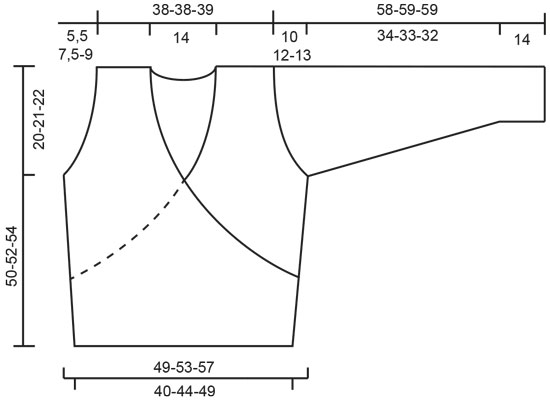 |
|
Have you finished this pattern?Tag your pictures with #dropspattern or submit them to the #dropsfan gallery. Do you need help with this pattern?You'll find 19 tutorial videos, a Comments/Questions area and more by visiting the pattern on garnstudio.com. © 1982-2025 DROPS Design A/S. We reserve all rights. This document, including all its sub-sections, has copyrights. Read more about what you can do with our patterns at the bottom of each pattern on our site. |










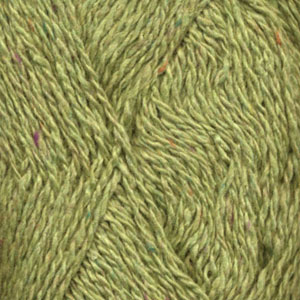


































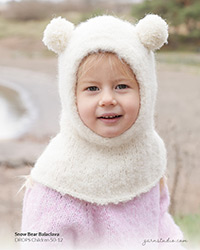
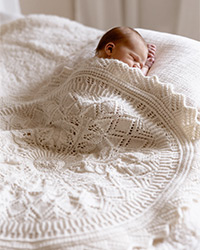
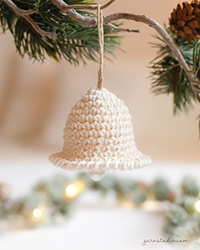
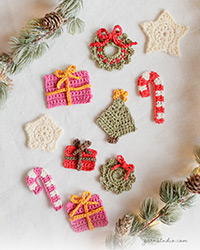
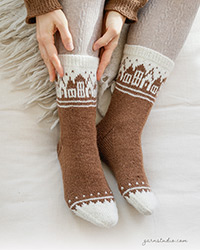
Post a comment to pattern DROPS 66-11
We would love to hear what you have to say about this pattern!
If you want to leave a question, please make sure you select the correct category in the form below, to speed up the answering process. Required fields are marked *.